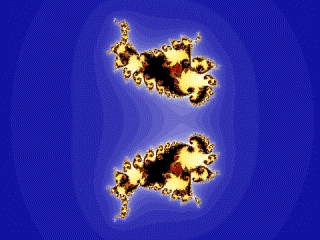Predict All Future Innovations
I’ve developed a method that allows you to predict all innovations for any product, service or entire industry.
Innovation is an information processing activity. To innovate you gather, analyze, organize, and then put information to use. Innovation is more than just thoughts and dreams. To make innovation real you must do something. To successfully innovate you must implement the right ideas at the right time in the right way. The Predictive Innovation Method helps you at each step of the way.
How does the Predictive Innovation Method work?
The method is based on a few basic premises, one is all possible concepts can be described, even if current technology can’t deliver them yet. Think of it like a library. There is a section and a shelf for everything. Sometimes the book has already been written and its there on the shelf when you want it. Other times you look and the book is missing. That is an innovation waiting to happen.
Another basic premise is there are consistent physical laws that govern the universe. Everything in the universe works within these laws. The interactions produce the tremendous variety we find. We see this all around us. Everything is made up of basic components following the same laws to create the variety we experience.
For example consider the common expression “the world is not black and white, it is shades of gray.” The intent is to say the world is complex and there are more than two choices. This implies decisions might be difficult or impossible.
When you examine it more closely you find something amazing. Starting with any two shades of gray you can never achieve the entire range. You can’t get darker or lighter than the two starting points. You are stuck moving to a dull point in the middle.
On the other hand if you start with black and white you can mix those two and achieve all shades of gray plus the extremes of black and white. The correct system produces infinite results with precision.
During my 25 years of experience analyzing literally thousands of systems the same basic elements and structures kept popping up. I discovered that by breaking down anything into 3 specific dimensions creating approximately 7 sets of 15 by 7 matrices I can describe anything with enough accuracy to be able to build it.
Anyone can quickly learn this method and start producing all the innovations they need. It makes innovation measurable and manageable.
My goal is to work with an organization that will support me promoting this method.
Contact me
Mathematics Behind Predictive Innovation
FutureMaps created using the Predictive Innovation Method are truly maps of the innovation space. Each innovation has a specific address and any desired set of innovations can be located by using the proper combination of parameters.
The Predictive Innovation Method constructs an n dimensional taxonomy (hypercube) to describe the innovation space. This is in essence a fractal model. By increasing dimensions, greater resolution can be achieved at predictable levels. This improves upon hierarchical taxonomies by allowing for multiple classifications and sparsely populated hypercubes.
Similar approaches have been used in computer graphics to highly accurately represent natural systems. This shares some similarity to the work of Stephen Wolfram on cellular automata models.

Extra Credit
If all that was a bunch of geeky gobly gook to you then you can at least enjoy the pretty picture and this fun song by Jonathan Coulton’s called “Mandelbrot Set”. You might want to visit his website. He has some great music and he has done some cool things with Creative Commons.
Mathematics Behind Predictive Innovation®
FutureMaps created using the Predictive Innovation® are truly maps of the innovation space. Each innovation has a specific address and any desired set of innovations can be located by using the proper combination of parameters.
The Predictive Innovation® constructs an n dimensional taxonomy (hypercube) to describe the innovation space. This is in essence a fractal model. By increasing dimensions, greater resolution can be achieved at predictable levels. This improves upon hierarchical taxonomies by allowing for multiple classifications and sparsely populated hypercubes.
Similar approaches have been used in computer graphics to highly accurately represent natural systems. This shares some similarity to the work of Stephen Wolfram on cellular automata models.

Extra Credit
If all that was a bunch of geeky gobly gook to you then you can at least enjoy the pretty picture and this fun song by Jonathan Coulton’s called “Mandelbrot Set”. You might want to visit his website. He has some great music and he has done some cool things with Creative Commons.



 Predictive Innovation Training
Predictive Innovation Training Predictive Innovation: Core Skills Book
Predictive Innovation: Core Skills Book RoundSquareTriangle.com
RoundSquareTriangle.com